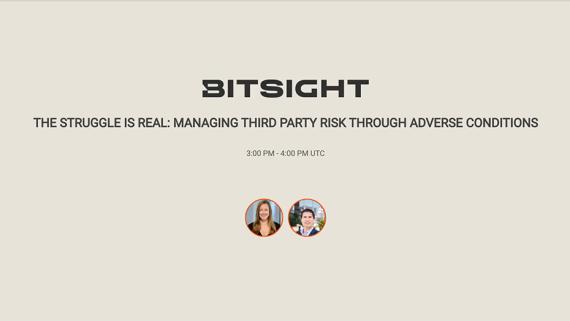Automating Your TPRM Program
Let's get practical. What aspects of your TPRM program can you automate to achieve those time-saving, efficiency-boosting results? See below for a quick rundown on pro tips from customers like Howard Hughes Corporation, on how to automate your program:
1. Inherent Risk Scoring
Automate the process of assessing inherent risk—the one posed to your organization by a third party before you’ve introduced any risk mitigation techniques. Objective data, such as Bitsight security ratings, helps you assign accurate inherent risk scores, allowing you to manage vendors more effectively.
2. Risk-Based Assessment Workflow
Streamline your vendor risk assessments by intelligently routing requirements based on risk levels and compliance needs. Implementing a tool like Bitsight Vendor Risk Management helps automate the risk assessment process so you can retire manual tools like emails and spreadsheets.
3. Assessment Validation: Trust but Verify
Questionnaires are a great tool to assess vendors, but they can be subjective and error-prone. Automation can verify vendor responses against objective data, providing a trust-but-verify approach that minimizes the risk of misinformation.
4. Shadow IT and Fourth-Party Discovery
Understanding what you’re up against in terms of third-party risk exposure and emerging threats across your extended supply chain isn’t easy. With Bitsight Continuous Monitoring, you can automatically identify vendor connections, shadow IT, and potentially risky fourth parties, get alerts on security events, and increase visibility over concentrated risk from service providers.
5. Policy-Oriented Alerting
Know when a vendor is out of alignment with your risk appetite. Automate alerts that flag policy violations, enabling rapid response to deviations from cybersecurity standards.
6. Third-Party Vulnerability Detection and Response
Capabilities like Bitsight Third-Party Vulnerability Detection & Response can streamline vulnerability identification, outreach to vendors to collaborate on mitigation efforts, and evidence sharing for quicker remediation when it matters most.
Repurposing Time Savings
With automation taking care of routine tasks, you're freed from repetitive work to focus on what truly matters.
- Proactive Threat Hunting: Stay one step ahead of emerging risks and vulnerabilities.
- Identifying Critical Vulnerabilities: Focus your attention on vulnerabilities that are most important to remediate, whether they're from CISA/DHS KEV alerts or other critical sources.
- High-Risk Vectors Focus: Zone in on high-risk vectors within your critical vendors, with automation highlighting the areas where intervention can have the greatest impact.
- Efficient Incident Recovery Plans: Automation simplifies the process of managing incidents, ensuring a swift and coordinated response when needed most.
- Regulatory compliance: Amid new regulations like the SEC cybersecurity rules in the US, or DORA and NIS 2 in Europe, automation capabilities can alert you of security issues that could jeopardize your compliance.
- Reporting for the Win: Use your newfound time to build and deliver insightful reports to your CISO, CIO, E-team, and Board of Directors. Support may wane over time if executives are not regularly reminded of the value of your TPRM program, so be consistent with periodic updates on productivity, efficiency, and effectiveness of risk reduction initiatives. Here’s how to get a handle on third-party risk management reporting.
As a cybersecurity—and business—leader, time is your most precious resource. Automation is your key to unlocking a scalable Vender Risk Management (VRM) program, data-driven decisions, and strategic cybersecurity initiatives that will reduce risk and improve your security posture. In the relentless battle against cyber threats, automation empowers you to stay ahead of the curve and watch your TPRM program soar to new heights of efficiency and effectiveness.





